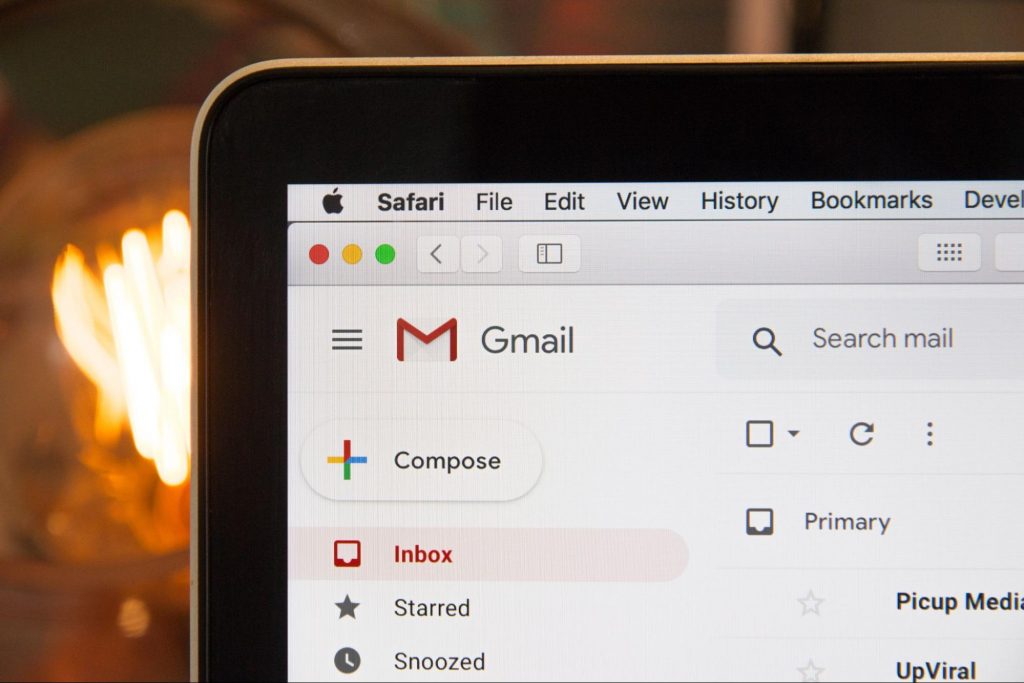Cold email recruitment can be difficult. Other companies and organizations are already sending emails every day to the people your firm wants to hire. Your recruiting email must stand out for all the proper purposes; otherwise, the candidate will most likely ignore it.
Sending superior emails is the first step in getting more applicants to reply to your cold emails. But, of course, saying it is easier than doing it. So consider these ideas and suggestions if you’re out of ideas to attract a possible new employee better. Make sure you validate your email list with an email checker before sending any cold emails. It will give you the power to be fully deliverable without getting any hard bounce.
1. Find the best candidates
It’s not a good idea for a recruiter to send out a generic email to every job seeker. It comes across as intrusive and lowers your chances of creating a positive first impression. Furthermore, there’s no assurance that everyone you contact will be a good match.
As a result, contacting the correct job searchers is critical to the effectiveness of your cold emailing recruiting efforts. You may save time and discover a fantastic candidate by ensuring they have the qualities you’re looking for. Let’s say, for example, you’re emailing about fantastic entry level graphic design opportunities – you probably won’t get any traction in an audience full of aspiring developers!
Sending emails to a purchased list offers you a greater chance, but it’s not without risk. For instance, if you acquired your list from the wrong source, most addresses are likely outdated or inaccurate. That may result in a higher number of lost emails, which will harm your sender reputation and deliverability.
It’s advisable to gather and develop your own list of possible applicants if you have the time. You might, for example, utilize LinkedIn to locate and select suitable applicants, then use email finders to acquire their contact information.
2. Do your research

Many business owners believe that using automation to send your email to as many people as possible is a clever idea. However, by establishing your own list of potential employees, you’ll be able to send out highly targeted letters that stand out.
Search online for more information to expand what you currently have on your list. Usually, people have a digital profile that you may use to double-check your information and learn more about them. Many job seekers, for example, will have a LinkedIn account that has all of their working experience. Writers may have their own blog or something similar where they publish their work. In some cases, they use paragraph writer to streamline and enhance their content creation process.
Preferably, what you should aim for:
- Previous job experience of the applicant
- Their qualifications and capabilities
- Their present job status
- Their professional aspirations
The aim is to discover any relevant information for the job role you’re hiring for. That way, you can be confident you’re reaching out to the correct individual with a message they’ll understand.
In addition, you can also use an email scraping tool that helps you collect email addresses that are publicly shown. What’s fantastic about this is that you have complete control over where you receive your email lists and who may opt-in.
3. Make your email more personal
Whether you’re sending marketing emails or cold follow-up emails, customization is always a good idea. When seeking talent, you may believe that sending generic emails would save you time. However, you now have the chance to use all of your previous information to build a tailored message.
It’s down to you how much unique content you want to add, but it’s typically a good idea to include more than just the possible candidate’s name. You may add your personal signature via an email signature generator or subtle details about the candidate, but don’t go too far, or you’ll turn away job candidates.
Mention a common interest if you have it, but the essential thing is to add useful information to demonstrate that you did more than just Google their name. Consider highlighting something on their profile that you think stood out, such as any projects they’ve worked on or an achievement they’ve made.
These days, it is important to emphasize email personalization. Otherwise, your outreach efforts will be futile due to emails ending up in a recipient’s spam folder.
Using an AI humanizer can refine tone, remove robotic phrasing, and make your outreach feel naturally written.
Before you send your next email, make sure that it does not lack personalization. In case you are uncertain, study some bad outreach examples so that you know which mistakes to avoid.
4. Write good subject lines

Users’ first (and sometimes final) impression of you is your headline. In many ways, the subject line of your email is more significant than the body of the email. After all, a fantastic email is useless if it never gets read.
The headline you choose should be carefully prepared and tailored to the individual or company receiving it. That is why you should always conduct preliminary research.You can also consider using email subject lines from those who have experience with cold outreach. For instance, this list of 100 subject line examples can help you increase opening rates of cold emails.
Your headlines can include “insider information” that only those people will understand – something that will build a great connection with the reader and draw the essential attention to open and read the email.
A few great tips for writing a good headline:
- Keep it relevant
- Personalize subject lines
- Avoid SPAM words
- Make a creative approach
- Keep the subject line short, aim for 5-7 words or under 40 characters
- Tell a joke, to get more engagement
- Create a sense of urgency
5. Pay attention to the candidate
The majority of individuals are accustomed to talking about themselves—their experiences, feelings, ideas, thoughts, and needs. You’re missing the purpose if you send a cold email that focuses on your needs rather than the needs of your target persona.
Instead, if you’re not sure how much information you’ll need, include a line or two about your company’s mission and the available position. Remember that after the candidate has indicated an interest in a job interview, you may go into further depth.
The most crucial thing to keep in mind is to concentrate on them and their profession. To spark the prospect’s interest, you might also include some statistics or social evidence.
6. Make it brief

Your initial instinct might be to provide everything a job seeker needs to make a decision. However, if your email is the length of an essay, your odds of the applicant reading it are slim.
It’s all about establishing contact with the proper individual at this point in the cold outreach process. The easiest way to accomplish this is to keep it short by presenting only the necessary information to make your case.
Remember to add links to your company’s site and job description so that the candidate may get further information if necessary. The job interview is the most significant moment to inquire about the position’s details. For the best response rates, opt for an email that is between 50 and 125 words long.
7. Improve the readability
It’s essential to make your email clear and straightforward, in addition to keeping it brief. Of course, no one writes a confusing email on purpose, but people can make it complicated accidentally by missing facts or misusing industry terminology.
When you’ve spent a long time working in a particular sector or organization, you start to speak in the language you’re most comfortable with, even if it’s not widely used. Many occupations have their own terminology that someone from another company or field would not understand. When sending an email to an applicant about an available position, avoid using jargon.
You can also improve readability by adding a bulleted list, putting words in bold, and making sure that your paragraphs are no longer than three lines. All of this makes the text “scannable” and helps keep the readers’ focus.
8. Keep the CTA in mind
A solid call to action is critical for each email you send. This regulation also applies to recruitment emails. If you look at all of the examples on the internet, you’ll notice that they always finish with the candidate’s next step.
Here are some of the CTAs, for example:
- Do you want to know more?
- What is the most effective way for us to communicate?
- If you’re open to it, I’d enjoy getting coffee next week to talk.
Two examples are in the question form, which is an excellent approach to increase the likelihood of getting a response. Maintain a straightforward approach. Remember, the aim is for them to contact you, so don’t add anything extra to your CTA that will make it too long.
9. Examine your tone of voice

When it comes to recruitment emails, most recruiters keep their writing very stiff. The moment they sit down to compose an email, even the most extroverted recruiters appear to have a personality change. When we communicate, though, it’s not simply what we say that matters but also how we say it.
Your email’s tone of voice may be the determining factor in whether or not you receive a response. The tone of your introduction, for example, may have a significant impact. If you want to recruit the appropriate type of applicant, your whole email should represent your brand.
You should aim for a friendly approach, optimistic and direct. Try to avoid being too formal as it can be off-putting.
10. Analyze your email marketing statistics regularly
Reaching out to potential workers is comparable to selling. Like selling, analyzing this form of communication can help you come to the best conclusion and build a script that will get you the most outstanding results.
Use an analytical sales prospecting tool software. You’ll always be able to see the metrics for every prospect and complete campaign statistics and A/B test results for email body and subject by using the email tester. If your efforts to catch the attention of the deserving candidates have gone in vain on the first try, then direct mail targeting may help build connections the second time. Direct mail targeting is an effective email marketing technique known for converting tire-kickers into leads.
Conclusion
As tough as drafting a cold recruiting email might be, it’s an essential component of the recruitment process. You’ll be able to create exceptional recruitment emails in no time if you follow the advice and tips in this article.
In addition, consider employing advanced cold email software to manage the time-consuming chores for you to simplify the interview process further. You’ll be on your path to filling job positions and helping individuals advance in their careers if you put in a bit of effort in making applicants feel valued.

